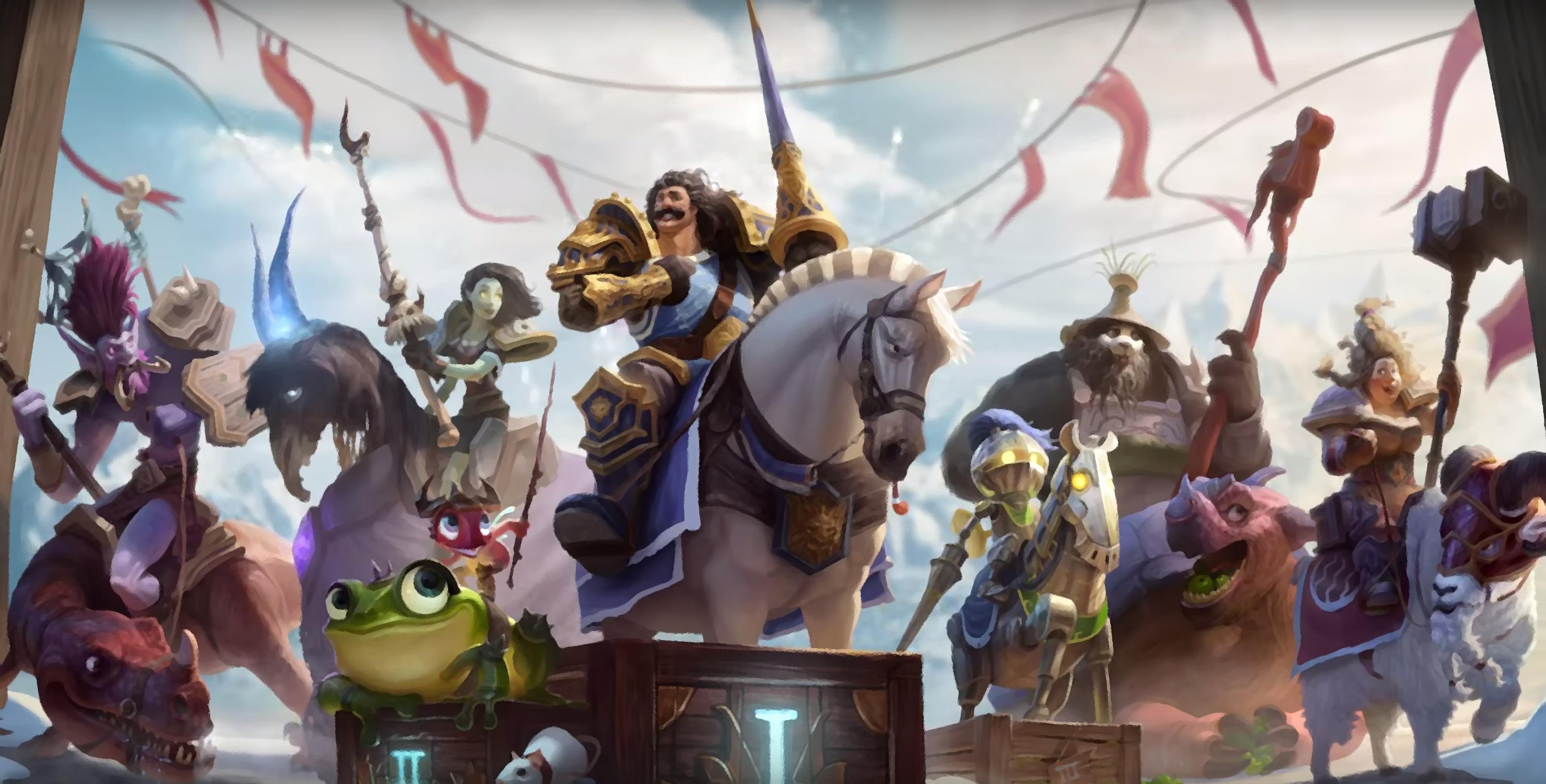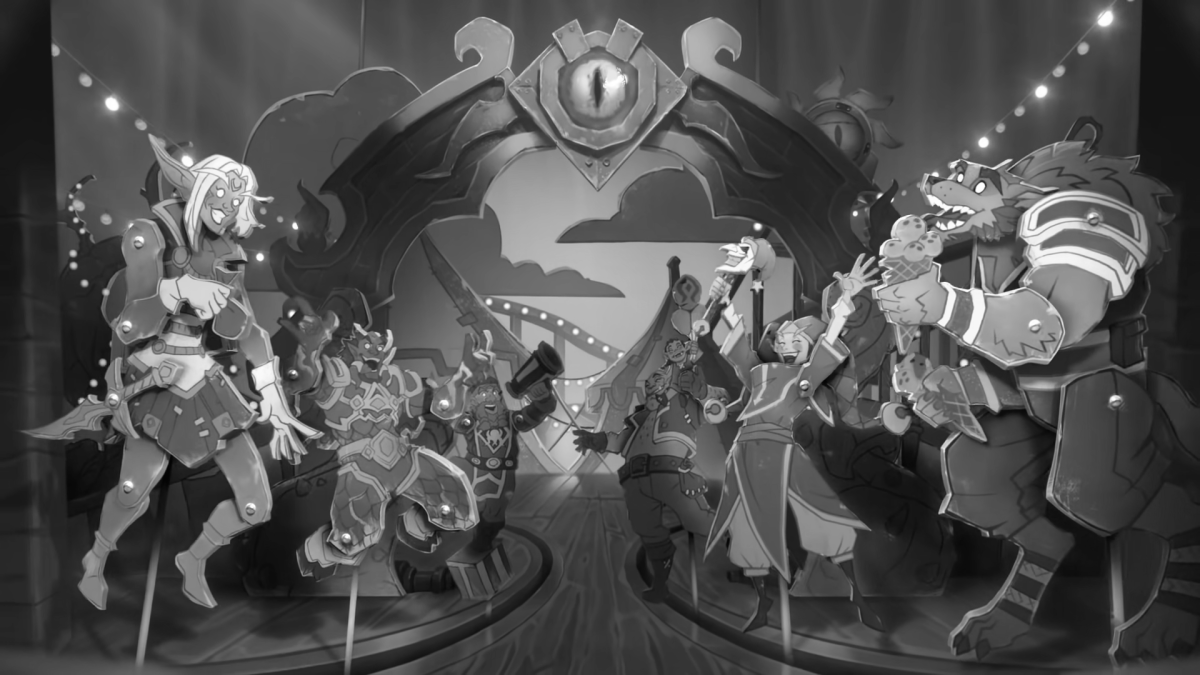The pre-release hype going into Hearthstone’s latest big expansion, The Grand Tournament, was marred with a lot of doubt. The cards featuring the new mechanic Inspire looked slow and underpowered. The other new mechanic, Joust, was too inconsistent. There were no neutral legendaries on the level of Dr. Boom or Emperor Thaurissan, and nothing to challenge the reign of Piloted Shredder.
Instead we were looking at 130 new cards with nothing explicitly overpowered or game-changing. I still held out on some hope—there’s a funny thing in card games where you can’t truly evaluate power until it’s resting in your hand—so maybe we were wrong! Maybe all these cards were relevant. Maybe Discard Warlock could be a thing. We could dream, right?
For a few days it seemed possible. Totem Shaman started tearing up ladder. Dreadsteed Warlock had a moment. But a few weeks later, the dust has settled, and we’re kind of back where we were before The Grand Tournament: Patron Warrior, Handlock, and Druid still run the yard.
The only new, dominant decks we’ve seen are Dragon Priest and Secret Paladin. That means 130 new cards have given us just two new decks. To be fair, some of those top-tier archetypes have seen some new cards. Druid added the Aspirant, for instance, and Midrange Paladin uses Justicar. But people are still playing Mech Mage the exact same way they were in February.
By my count, here are The Grand Tournament cards getting consistent play in top-tier decks according to Tempo Storm’s meta snapshot. Living Roots, Darnassus Aspirant, Competitive Spirit, Mysterious Challenger, Justicar Trueheart, Murloc Knight, Bear Trap, Ram Wrangler, Gormok The Impaler, Holy Champion, Wyrmrest Agent, Twilight Guardian, and Chillmaw. That’s 13 cards—13 out of about 130, which means only 10 percent of the content introduced in The Grand Tournament is being played at a high level. That isn’t necessarily a bad thing. But it’s certainly interesting when you compare it to Blizzard’s first Hearthstone expansion, Curse of Naxxramas.
That expansion only introduced 30 cards. Of those 30, Haunted Creeper, Mad Scientist, Zombie Chow, Unstable Ghoul, Sludge Belcher, Nerubian Egg, Shade of Naxxramas, Death’s Bite, Voidcaller, Dark Cultist, and Webspinner became crucial pieces to decks that are still top-tier to this day. There’s also Kel’Thuzad, Deathlord, Duplicate, and Echoing Ooze that see occasionally in certain archetypes. And there was also Undertaker which was so broken it needed to be nerfed into oblivion. So out of that expansion we had 16 cards that directly impacted the Hearthstone meta. That’s above 50 percent, which is kind of crazy.
A couple things about that expansion: It was Hearthstone’s first, meaning that there were fewer cards to compete with. And you could make the argument that an expansion with more than half of its cards integrating into the meta is less healthy than an expansion that integrates only one percent, and I might agree with you. But I think this is particularly interesting because we can really see how Blizzard’s design philosophy has changed as Hearthstone has developed as an esport. Curse of Naxxramas redefined the game. It’s a must-buy for anyone considering playing Hearthstone seriously. You get the feeling that Blizzard isn’t trying to rock the boat anymore.
There’s something interesting that Hearthstone designer Mike Donais told me in an interview recently. It was in regards to the minion Piloted Shredder which is still the most popular neutral pick in the game.
“When we were designing Piloted Shredder we talked about whether we wanted this to be one of the best four drops or not,” he said. “We talked about whether it was fun to watch, fun to play, and whether it increased skill as well as luck. We want that to be part of the game. People play hundreds of games of Hearthstone, and Piloted Shredder makes sure that each game has a little bit of surprise, a little bit of excitement. We thought that was important, so we decided to make the card.”
Ignore the bit about RNG and focus on the first sentence. Blizzard tests Hearthstone constantly. It’s not an exact science, but the company is pretty good at it. It knew the card was going to be an auto-include in practically every tempo deck, and it released it anyway. The power level did not shock them. It’s strength and usefulness was by design. I think it’s fair to say that Blizzard had some inkling that maybe just 10 percent of The Grand Tournament would make it into professional play. I think it’s working to make sure its expansions don’t make earlier expansions obsolete, which is a very honorable way to do things. You know what’s worse than 13 useful cards? Seventy useful cards that totally break your bank and destroy your old decks. Right now, Blizzard is trying to avoid the situation it had with Naxxramas.
It goes back to that old adage about Hearthstone being for everyone. Blizzard cares very much about the fertile pro scene on its hands, but it earns so much more money from casual players. Scaring them off with a huge investment, like, say, 100 top-tier The Grand Tournament cards doesn’t make a lot of business sense.
For those of us that enjoy professional Hearthstone, however, we’re left with a very static meta. The same decks, the same classes, with none of the exotica that comes with a massive content injection. That’s a frustration that Blizzard has decided to live with. As long as people like you and me are still enjoying Hearthstone, you can continue to expect about 13 good cards every six months.
Image via PlayHearthstone/YouTube













Published: Oct 6, 2015 10:22 am